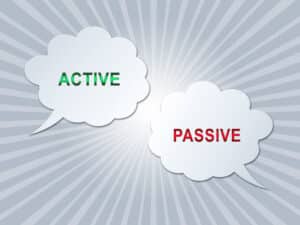Writing is powerful. It carries with it the immense potential of having the ability to make people feel happy, sad, angry, convicted or any other number of intense emotions. It can also persuade people to believe a certain way or to make a difficult decision. This potential to move the reader to make a decision is what makes effective writing such an essential part of the content marketing world. From blogging to social media to newsletters and beyond, the written word can make or break your content marketing efforts. Simply put, bad writing can destroy any chance you have of converting a potential customer into a lifelong one.
In this blog article we discuss six simple content marketing writing tips for engaging your audience and making your prose pop.
Writing Tips For Your Content Marketing
- Use Adjectives
In the most simple terms, an adjective is a word that describes a noun or a pronoun. Its job is to provide more information to the reader to help them fully understand and picture the sentence as well as the content as a whole. While adjectives are not necessary for every type of writing (you won’t find flowery descriptions in a scientific report, for example), they are incredibly necessary in many forms of content marketing.
Adjectives in content marketing serve the purpose of making the words you write more visual and distinctive. They help your reader picture what you’re trying to say, provide more background knowledge and can even convince your audience that what you have to share is something they simply cannot ignore.
How much you use adjectives, however, will depend on the type of content you’re creating and the industry you’re in. Things like blog posts, social media updates, newsletters, etc. lend themselves to needing a more descriptive form of language. In contrast, highly technical content may be an area where adjectives should be cut back in favor of more concise rhetoric that gets to the point quickly and efficiently. It’s the content marketer’s job to know their industry, the type of content they’re creating and what style of writing their target audience will respond to the best.
- Use Active Voice
When active voice is used, the focus is on what the subject of the sentence is doing. The sentence is written in a certain order, with the subject (the noun that is doing something) first, then the verb (the action word), followed by the direct object (the noun in the sentence that is the object of the subject’s action).
The main reason active voice is preferred over passive voice in content marketing is that it creates strong, easy-to-read content. It projects a sense of confidence and lends itself to engaging with the reader and establishing a sense of trust. Additionally, since it isn’t long and drawn out, it keeps the reader interested.
Copypress shares with us that using active voice in your content marketing can provide the following advantages:
“Engage – Action verbs and active voice help the reader get into the story and directly engage with the reader.
Readability – Active language and phrases are easier to read than passive verbiage, especially for those whose first language is not English.
Persuade – All content is created with the purpose of calling the reader to action, either by doing business with your company or sharing your content. Using action verbs and active language makes your writing persuasive and engaging.
Momentum – When you write in passive voice, your content becomes drawn out and less exciting to read. By using active language throughout your content, you will keep your readers from scrolling to the end of the article or leaving the page.
Connect – Web content is meant to provide information in a way that is quick and easy to digest. Consistently using passive language can cause articles and posts to sound more academic, sometimes to the point of alienating readers.”
While active voice is something to strive for in your content marketing, there will inevitably be times where you find yourself using passive voice. That’s okay. There is a time and place for each style of writing, the key is knowing when to use each one. If the majority of your writing is in active voice over passive voice, you’re on the right track.
- Avoid Jargon
Jargon is the special vocabulary that a specific industry uses. While it does have its place (such as when you’re trying to build credibility or demonstrate industry knowledge), it should be used sparingly in your content marketing to make it as inclusive as possible.
Blend discusses some of the negative effects that too much jargon can have on your content marketing:
- It can feel less authentic
- It can be confusing
- It can mean different things to different people or industries
Since we are discussing content marketing specifically, here is a glossary of marketing terms that would be considered jargon:
Content marketing: The strategy of creating and publishing high-quality content to support and enhance marketing activities, build audiences and develop consumer trust.
CTA: Call to action. A trigger used to convert leads into customers. Content marketers design content with this in mind – what is the desired outcome?
Keyword: A word or phrase that helps people find your web page in a search engine.
SEO: Search Engine Optimization. Improves a website’s performance in search engines, making the page easy to find.
Tags: A label attached to a web page, blog post, image or video that summarizes its content.
ALT-tags: A short text description of an image or web page that makes it easier for search engines to find or that is used with text-to-speech tools.
Analytics: Refers to the analysis of data to obtain information and insight. Often shorthand for Google Analytics.
There will obviously be times when it’s important to include jargon in your writing content, but always consider your audience and provide a simple, short explanation about what the word means and how it should be used. It really doesn’t take much more time, and it opens your content to a much wider audience.
- Be Concise
When you are creating your content marketing, remember that you are writing for your target audience, not yourself. Don’t waste their time! Some simple ways to make sure that you eliminate wordiness in your content marketing are to:
- Use active voice (which was previously discussed above)
- Delete introductory phrases. Examples include:
- To be perfectly honest
- As a result of
- On the other hand
- As you can see
- Avoid redundancies. The following are a few examples of common redundancies:
- “Added bonus: A bonus by definition is something added.
- Browse through: To browse is to look through something, so through is already contained in its meaning.
- Close proximity: To be in proximity to something is to be close to it.
- Free gift: If it’s not free, it’s not a gift.
- Future plans: All plans pertain to the future.
- Prior experience: All experience is prior.”
- Use data visualization (information in the form of a chart, diagram, picture, etc.).
- Replace proper nouns with pronouns when appropriate
- Vary sentence structure
- Separate your content marketing into brief paragraphs
- Use a natural, conversational tone
- Proofread!
If you’re unsure if something should be included in your content marketing, ask someone to read it over for you. If they feel something is unnecessary, consider removing that portion. Everything you write should provide value to your target audience, not filler material to get to a certain word count.
- Be Inclusive
This was touched on briefly in the discussion about avoiding jargon, but it’s imperative to be as inclusive as possible in your content marketing. This should not solely be a strategy to avoid making people angry or to remain politically correct. Far from it in fact. This should simply come from a desire to make sure no one is excluded from the conversation. It’s essential to be purposeful with the language you use to make sure your message gets across to as many people as possible. Things to consider when weaving inclusive language into your content marketing are:
- Gender-neutral language
- The use of partner, sibling, student or child in place of more gender-specific terms.
- Gender-neutral forms of occupations and words. For example, “firefighter” instead of “fireman” and “humanity” instead of “mankind.”
- When appropriate, the use of the singular “they” instead of “he” or “she.”
- Ethnicity, race and nationality
- Determine whether racial and/or ethnic terms mentioned are the ones that the particular group uses themselves.
- Ensure stereotypes are not perpetuated. For example, the assumption is not made that all members of an underrepresented group are underprivileged.
- Check that race is referred to only when relevant to the context.
- Disability, health and neurodiversity
- Person-first language should be used over identity-first language (for example, “a child with Down syndrome” as opposed to “a Down syndrome child”).
- A disability or condition is only mentioned when it is relevant.
- Terminology that suggests that a person suffers from their disability should be avoided.
- Neutral language is preferred, such as “does not have a disability” instead of “able-bodied.”
- Age
- Terms such as seniors and elderly should no longer be used. Instead, aim to use such terms like older adult, or be specific about which age range you’re referring to (such as “someone between the ages of 65-75”).
- Negative attitudes about aging should be avoided.
- Language that conveys aging as a normal part of the life experience is preferred.
- Socioeconomic status
- Person-first language should be used. For example, instead of saying “a homeless person” use “a person who is homeless.”
- Be careful to avoid language that blames people for their circumstances. An example of this would be to say, “a person without a high school diploma” over “a high school dropout.”
- Words such as “ghetto,” “the projects” or “inner city” can be associated with negative connotations. Specific details about the area something or someone is located would be preferred.
- Plain language
- The words and references used should be understood by many people.
- Explanations for certain words and concepts should be provided in order to make the language as inclusive as possible.
- Words or phrases that someone who speaks limited English may not understand should be avoided.
- Images
- Diverse groups of people should be portrayed in any imagery you use. This includes different races, genders, ages and abilities.
- Take care to show members of diverse groups completing tasks they are traditionally underrepresented in. An example of this could be a woman of color shown in a leadership position.
The takeaway from this writing tip is to take care to use the language preferred by the group or individual you are writing about. Do not assume you know what is best, and be aware that terms change as our understanding evolves. If you don’t know how to refer to someone, ask! Additionally, an excellent resource for keeping track of the details of inclusive language is the American Psychological Association (APA).
- Edit Your Content Marketing
This step cannot be overlooked. Writing mistakes simply cannot make it into your content marketing. Loyal customers and potential customers alike will be quick to point out any mistakes you’ve made, and even one simple error can make them lose their trust in you. Things to check for when editing are:
- Correct spelling
- Commonly misused words, expressions or phrases
- Has punctuation been used correctly?
- Does your content marketing conform to the correct style guide?
Taking the extra step to ensure your copy is free from errors is an important way to prevent mistakes from making it into your copy, saving yourself from potential embarrassment.
In content marketing, perhaps more so than in any other type of writing, it’s important that your writing speaks to the individual who is reading it. This can be difficult as every person in the world comes from a different experience and has a different way of looking at the world. Luckily, you don’t need to reach everyone — but there are some simple writing tips for making sure your content marketing speaks to as many people as possible. By using adjectives, active voice, avoiding jargon, being concise and remaining inclusive, you open up your content marketing to the largest number of people.
Do You Need Help Reaching Your Target Audience With Your Content Marketing?
If you feel overwhelmed with all the necessary writing steps to reach your target audience, we can help! Contact Three Girls Media for a complimentary consultation with our CEO, Erika Taylor Montgomery. Erika will be happy to discuss the specific needs of your company and how Three Girls Media’s experienced team of writers can help!
Special Offer:
Sign up for a complimentary consultation during December and receive an Annual Marketing Planning Guide valued at $475! We offer a 30-minute phone consultation with our CEO, and can answer your questions and discuss your specific marketing needs - no strings attached. Call 408-218-2391 or contact us today to arrange your consultation!




